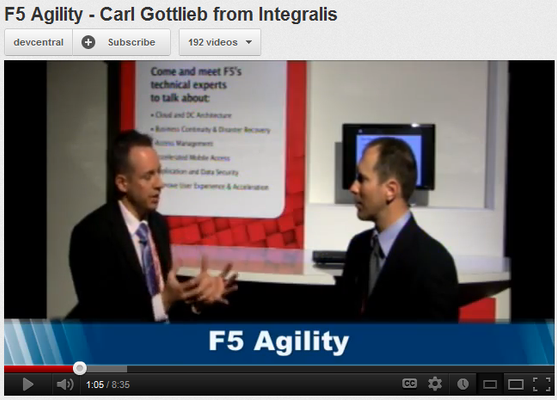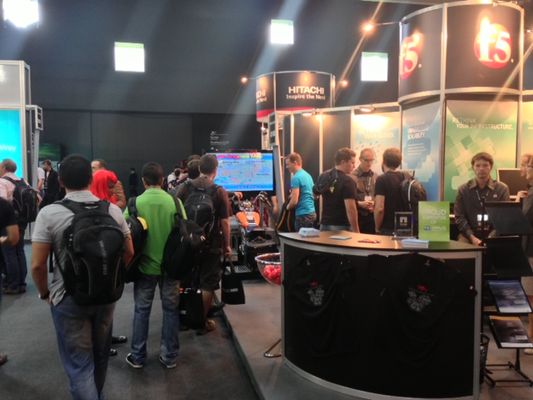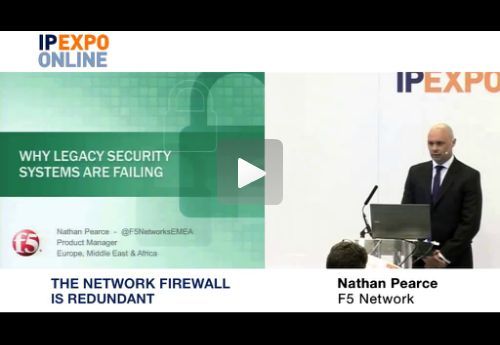secure access
19 TopicsDNSSEC – the forgotten security asset?
An interesting article from CIO Online last month explained how DNS had been used to identify over 700 instances of a managed service provider’s customers being infected with malware. The MSP was able to determine the malware using DNS. As the article points out, a thirty year old technology was being used to defeat twenty-first century computer problems. In short DNS may be a viable means of identifying infections within networks quicker, because as well as security apps relying on DNS, the attackers do as well. DNS however still comes with its own unique security approach. The signature checking procedures outlined in the Domain Name System Security Extensions (DNSSEC) specifications were deemed adequate for the protocols surrounding domain resolution. While the certificates offer security that is authenticated, the data is not encrypted, meaning that data is not confidential. The other problem with DNSSEC is that in the event of Distributed Denial of Service (DDOS) DNS Amplification attack on a DNS server, the processing of validation requests adds to the processor usage and contributes to slowdown. DNSSEC does, however, provide protection against cache poisoning and other malicious activities and remains part of the network security arsenal. At F5, our solution for the DNSSEC load problem was to integrate our DNSSEC to our BIG-IP Global Traffic Manager. The traffic manager handles all of the overhead processing requirements created during a DDOS DNS Amplification attack. The result is that the DNS Server can be left to function with no performance limitation. On top of this the F5 solution is fully compliant with international DNSSEC regulations imposed by governments, organisations and domain registrars. While DNSSEC may seem mature and even outdated for its security specifications, the correct application of technology, such as F5’s BIG-IP Global Traffic Manager delivers peace of mind over security, performance, resource and centralised management of your DNS.301Views0likes0CommentsVideos from F5's recent Agility customer / partner conference in London
A week or so ago, F5 in EMEA held our annual customer / partner conference in London. I meant to do a little write-up sooner but after an incredibly busy conference week I flew to F5's HQ in Seattle and didn't get round to posting there either. So...better late than never? One of the things we wanted to do at Agility was take advantage of the DevCentral team's presence at the event. They pioneered social media as a community tool, kicking off F5's DevCentral community (now c. 100,000 strong) in something like 2004. They are very experienced and knowledgeable about how to use rich media to get a message across. So we thought we'd ask them to do a few videos with F5's customers and partners about what drives them and how F5 fits in. Some of them are below, and all of them can be found here.283Views0likes0CommentsData Diversity: a leading UK tech writer posts…
To change things up a little TechView has invited tech luminary Adrian Bridgwater to share a few thoughts on Big Data and related management issues. More about Adrian can be found at the end of this post. He can be found in many places online, including Twitter and at ComputerWeekly.com. Thanks for contributing Adrian! Data Diversity: protecting the species inside the “infinite variety” Big data, complex event processing, multi-core systems and real time events are spirally upwards and outwards into a combined vortex of increased interconnectivity with the resultant data now traveling across a multiplicity of network protocols -- so are we headed for a fall, or do we have the application and services management layers in place to be able to survive in this new ecosystem? Let’s approach this question organically and ecologically. I first came across the term “infinite variety” while watching the naturalist David Attenborough present the BBC series Life On Earth, but I believe its actually a turn of phrase attributable to Shakespeare’s Antony and Cleopatra. Either way, the rise of terms like so-called “big data” have come to the fore as we now see data streams and data sets evolving into an (almost) infinite number of new forms. Data is interconnecting and (in some cases) self-populating through automation controls. The question now is whether we have taken the trouble to prepare and architect for this new data-enriched landscape that we find ourselves in. After all, huge swathes of data without management and analysis functions… are just huge swathes of data. The “value” fulcrum tips in our favour when and only when we can evidence some degree of control and power over the data before us. But it’s not just about data management is it? The problem here (somewhat predictably perhaps) comes back to data security in the first instance. You may have already read about (Chris) Hoff’s Law on F5 DevCentral which states that: “If your security practices suck in the physical realm, you’ll be delighted by the surprising lack of change when you move to cloud.” We can further postulate that the corollary or upshot of Hoff’s Law is that if your data security practices DO NOT suck in the physical realm, you’ll most likely be concerned by the inability to continue that practice when you move to cloud and the world of big data. So tying our two themes together here: we have the “infinite variety” of human data usage and its constantly evolving new data streams across new form factors and devices as they emerge -- and we also have security and the need to protect our species and the lifeblood and food-source (in this case data) that it thrives upon. In the real world we arm ourselves with defences and build a stronghold inside which we can live and function and go about our normal functions. In the virtual world, we should perhaps treat encryption techniques and anti-malware controls as body armour, but recognise that we still need deeper controls such as software appliances with functionality like multi-tenant support to really batten down the hatches. From this point, we can explore new ecosystems and planets and populate our world further without fear of disease or plague -- or (if that’s one analogy too far for you) at least, we can keep our data locked down at get on with life. Adrian’s bio: Adrian Bridgwater is a freelance journalist specialising in cross platform software application development as well as all related aspects of software engineering and project management. Adrian is a regular writer and blogger with Computer Weekly, Dr Dobbs Journal and others covering the application development landscape to detail the movers, shakers and start-ups that make the industry the vibrant place that it is. His journalistic creed is to bring forward-thinking, impartial, technology editorial to a professional (and hobbyist) software audience around the world. His mission is to objectively inform, educate and challenge - and through this champion better coding capabilities and ultimately better software engineering.265Views0likes0CommentsPolicy is key for protection in the cloud era
Today, companies host mission-critical systems such as email in the cloud, which contain both customer details, company-confidential information and without which, company operations would grind to a halt. Although cloud providers were forced to reconsider their security and continuity arrangements after the large cloud outages and security breaches last year, cloud users still have a number of challenges. Unless organisations work with a small, specialist provider, it is unlikely that they can guarantee where their data is stored, or the data handling policies of the cloud provider in question. Organisations frequently forget that their in-house data policies simply will not be exported to the cloud with their data. Authentication, authorisation and accounting services (AAA) are often cited as major concerns for companies using cloud services. Organisations need assurance of due process of data handling, or else a way to remove the problem so that they lose no sleep over cloud. Aside from problems with location, one of the main problems with cloud is that it does not lend itself to static security policy. For example, one of the most popular uses of cloud is cloudbursting, where excess traffic is directed to cloud resources to avoid overwhelming in-house servers, to spread traffic more economically or to spread the load when several tasks of high importance are being carried out at once. Firm policies about what kind of data can be moved to the cloud, at what capacity threshold, and any modifications which need to be made to data all need to be considered in a very short space of time. All of this needs to be accomplished whilst keeping data secure in transit, and with minimal management to avoid overloading IT managers at already busy times. Furthermore, organisations need to consider AAA concerns, making sure that data is kept in the right hands at all times. Organisations need to secure applications, regardless of location, and to do this, they need to be able to extend policy to the cloud to make sure that data stays safe, wherever it is. Using application delivery control enables companies to control all inbound and outbound application traffic, allowing them to export AAA services to the cloud. They should also make sure that they have a guarantee of secure tunnelling (i.e. via VPNs) which will make sure that data is secure in transit, as well as confirming that only the right users have access to it. Using some kind of secure sign on such as via two-factor authentication can also make sure that the right users are correctly authorised. In future, organisations may begin to juggle multiple cloud environments, balancing data between them for superior resilience, business continuity and pricing offers – often referred to as ‘supercloud’ - and this can be extremely complex. As company usage of cloud becomes more involved, managing and automating key processes will become more important so that cloud is an asset, rather than a millstone around the neck of IT departments.260Views0likes0CommentsWhat banks can learn from Amazon
Banks have for some time now existed in what Tower Group refers to as a ‘multi-channel world’. What this means is that they are driving at delivering a consistent experience for their customers across the variety of interactions or touch points they have with them. To be a customer of a retail bank in the UK, for instance, can mean going to a branch to pay in a cheque, talking to a call centre operative, or checking your balance and paying bills online. Non-branch electronic channels are experiencing growth, driven by increased customer trust in transacting over the Internet, access to more ways of connecting to the Web (tablets and smartphones as well as computers), plus more advisory services channels, like social media. Tower Group research suggests that the assumption that has driven this multi-channel strategy is that the branch is necessary to attract and retain customers, that branch density determines market share, and that non-branch channels such as those described above are add-on services, complimentary to the branch. Have the banks succeeded in this strategy? Well, yes. The customer experience is largely consistent across channels. However, Tower Group suggests that this experience is consistently mediocre. And therein lies the paradox. The unique value of these additional channels, especially the Web-based ones, is diluted, causing customer disengagement. And customers want to be engaged online. There is a substantial portion of the user base that is comfortable and happy transacting online. The thing that puts them off is the paucity of experience, and the paucity of experience is caused by not treating the channel as a specific, separate product with its own measures of success. This is where Amazon shows the way. Amazon delivers a compelling customer experience. This is the case because the online experience is a major component of Amazon’s business. When you have tech-savvy banking customers in the most desirable age bracket and social status turned off by the online experience because it is not differentiated, is not treated as a business in its own right, then it’s clear a different approach is needed. Tower Group recommends giving electronic channels pride of place and committing to them as a business, not as an alternative. Web platform performance indicators must reflect this: they should be given a sales target, given a target Net Promoter score and aim at delivering a certain percentage of customers to be active online. The Web channel itself should have deliverables around page load time, security standards and other aspects of the recipe that makes a complete and compelling online experience.253Views0likes0CommentsVMworld 2012 Europe - Strobel's Scribblings, Part I
The first of what will be a series of reports from Barcelona...F5's Frank Strobel wraps-up Day Zero's events: ---------- VMworld EMEA 2012 – more exciting news from F5 At the evening prior to the start of the 2012 edition of VMworld EMEA, the F5 team is getting ready for another successful event - this time in beautiful Barcelona, Spain. No offense, Copenhagen, but the combination of sunshine, tapas, Sangria, and the Mediterranean has you beat. Earlier today we held a vmLIVE session with over 700 VMware channel partners in attendance (a new record for us!) interested in learning about what F5 can deliver in support of the Mobile Secure Desktop . Clearly, this is a hot topic and one that we will focus on during VMworld EMEA with a theater presentation in the solution exchange (Enhancing the User Experience for Multi-Pod VMware View Deployments -Tuesday, October 9th, 12:30pm) and our live demo in the booth. If you are evaluating VMware View for your VDI needs, you might want to consider paying us a visit to learn more. Also, today, we held a joint breakout session with VMware during the TAP pre-event day presenting on the VMware vCloud Automated Networking Framework: Network Extensibility (TEX1899) together with Ravi Neelakant. Charlie Cano delivered another standing room only performance. Those who have seen Charlie present before know why he draws large crowds. You will have a chance on Thursday to witness Charlie’s presentations skills during his own breakout sessions (SPO2069 - Solving the Application Provisioning Nightmare: Integrating vSphere and vCloud Director with Your Application Delivery Networking Services). Last but not least, stay tuned for more exciting news coming from F5 tomorrow. You don’t want to miss that one for sure. So, feel free to come by F5’s stand, G100, to check out our latest solutions and to participate at our really cool Motorcycle racing game. And, as always, there are cool prizes to be had… Viva Espana, Viva VMworld!253Views0likes0CommentsHP Discover and what F5 bring to the party
There are only a couple of weeks to go before HP Discover, taking place this year in Frankfurt on 4-6 December. HP is a big organisation with lots of end user and vendor touchpoints. The short video below, by F5's Alasdair Pattinson, lays out the main ways in which F5 and HP collaborate, namely in data centre consolidation projects, Bring Your Own Device initiatives, and smoothing and securing implementations of Microsoft Exchange.243Views0likes0CommentsVMworld 2012 Europe - Strobel's Scribblings, Part III
More from Frank Strobel, live from VMworld 2012 in Barcelona. Today, 16,000 feet and a tale of two booths... At the end of another 10+ hour day at VMworld in Barcelona, my feet started hating me. At least, they clearly express their displeasure about being used too much. At the same time, however, there are 16,000 feet here interested in our story. Countless of those feet found their way to our booth today. And, speaking of booths, there are some that seem to be always full of attendees and some that are not so much. Can you guess from the pictures which of those are F5's? Many of the visitors to our booth asked about yesterday's VXLAN announcement and we were excited to share our plans with them. In addition, Charlie Cano co-presented with Adina Simu from VMware in a repeat performance from VMworld in San Francisco. Their joint presentation, vCloud Networking: an Extensible and Open Platform, was a technical deep dive describing the wealth of offerings the vCloud Ecosystem Framework provides from known vendors in the virtual data center realm, with easy provisioning, flexible insertion points, and automated lifecycle. Here’s a photo of Charlie in action! Last but not least, as I have shared with you in previous blog entries, F5's support for VMware View continues to grow. The latest member of the family is the Branch Office Desktop solution that the View team announced at VMworld just yesterday. Once more we asked Lori Mac Vittie to help us understand what F5 is doing and, more importantly, how this is beneficial to customers deploying remote and branch office desktops. Please find Lori's latest blog entry here: Bye Bye Branch Office Blues As we are wrapping up the business day in Barcelona, we are looking forward to tonight's party. Although, my feet have already told me that dancing is out of the question. No Flamenco for this VMworld attendee...241Views0likes0CommentsContext. SDN. Big Data. Security. Cloud.
That's right, something for everyone. F5 recently attended IP Expo in the UK. We had some speaker sessions at the event - some readers might have come along and seen them live. The event organisers did a nice job of filming the slots along with the slideware presented, and here they are: THE NETWORK FIREWALL IS REDUNDANT (NATHAN PEARCE) BIG DATA - A CONTEXTUAL GOLDMINE (NATHAN PEARCE) KEEPING APPLICATIONS RUNNING SMOOTHLY FROM THE CLOUD (NATHAN PEARCE) AUTOMATION & ORCHESTRATION - KEY REQUIREMENTS FOR SOFTWARE DEFINED DATA CENTRES (KEVIN WARE-LANE)236Views0likes0Comments




